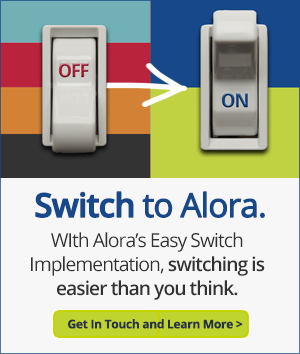
12 Nov Building Strong Referral Relationships for Home Health Agencies
Being the Go-to-Choice for Home Health Care
Especially for smaller to mid-sized agencies, the question of where do you find new home-health patients is always top of mind. Your personal network of friends and family can only do so much. While it would be nice to know every senior citizen in your community, realistically that’s not likely to happen. The truth is that your agencies depend on referrals from other healthcare providers. While CMS regulations, OASIS data, and online reviews occupy most of your attention, your agency cannot survive, let alone grow, without the trust of physicians, skilled nursing facilities (SNFs), discharge planners, and hospital staff.
Referrals are the lifeblood of home health. However, with increasing scrutiny on improving outcomes, lowering rates of readmission, and patient satisfaction, referral sources are more selective than ever. So what are they really looking for in a home health partner? In this blog, we’ll explore what hospitals and physicians value most when choosing an agency, and how your team can build the kind of relationships that produce referrals consistently.
Data Proves Your Competency
Once you get your foot in the door of a hospital, SNIF, or other referral source, that’s your chance to prove your agency’s competency. To share your positive results, you must be diligent about tracking outcomes. To reinforce and underscore your claims with proof, share your agency’s data on compliance, readmission rates, and patient satisfaction.
You can demonstrate your results in many different media formats, as long as it’s anonymized and private information is hidden. You could create a branded PowerPoint presentation with your agency’s dashboard and update your charts and graphs regularly. The aesthetics matter less than the numbers. It’s always a good idea to show a provider your mobile phone with your caregiver app already loaded and operating in real time. That way the providers know that your promises are not made-up but based on actual data.
Speed and Reliability
 When I first connected with the owners of a local hospice organization, they confided in me their biggest challenge: they were understaffed, and they were struggling to keep up with all the new patients needing hospice care. I promised that if they referred a patient to us, our agency would complete intake and start-of-care (SOC) that same day. Once they saw how quickly we leapt into action, they started sending us to several new patients’ homes, sometimes even before they met the patient!
When I first connected with the owners of a local hospice organization, they confided in me their biggest challenge: they were understaffed, and they were struggling to keep up with all the new patients needing hospice care. I promised that if they referred a patient to us, our agency would complete intake and start-of-care (SOC) that same day. Once they saw how quickly we leapt into action, they started sending us to several new patients’ homes, sometimes even before they met the patient!
The moment a referral comes in, the first few hours are a test. Passing the test proves your agency is competent and deserves more referrals in the future.
Providers need to know that your agency will follow through on time and without error. Hospitals especially are under pressure to discharge patients quickly but safely. If your intake team is slow to respond, unprepared to accept high-acuity cases, or unclear about eligibility, their trust will erode quickly. That is easier said than done. A highly responsive agency must always stand ready and on-call, including nights and weekends. If you are fortunate enough to find a high-volume referral source, give them a single point of contact at your agency, someone they can text or call anytime. Make it your standard operating procedure that when a referral arrives, within 24 hours your intake team is front-and-center with that patient.
Delays in SOC increase the risk of re-admission and negatively impact both patient health and provider performance metrics. Assuming your agency has the right software or digital platform, you should be able to track the exact time a referral comes in, the time you complete SOC, and the time difference between the two. Make your speed-to-SOC a key metric by which you measure your agency’s efficiency.
A little known secret is that many larger hospitals enforce windows of time for discharge, including days when they don’t like to release any patients to their home. These schedules are rarely available to the public. But if you spend the time getting to know hospital staff, you could figure out which days they prefer and on which days they avoid discharge. Why does this matter? Because you can use this information to align your staff’s schedule and availability, ensuring you have people ready to go on days when people are leaving the hospital and returning home. Of course, sometimes a delay might be necessary. When a delay can’t be helped, don’t wait for the provider to check in. Proactively communicate and promise an exact time by when your agency will have onboarded their patient.
Referring providers need to know their patients are in good hands, not disappearing down a black hole. They want to know if their patients have started home care. What issues have been identified, and do they differ from the provider’s initial diagnoses? What’s the care plan, and does it align with the physician’s intention? How and when will they be informed of any changes or emergencies?
Sadly, too many home-health agencies still communicate in a reactive, fragmented way that creates risk and frustration. Your agency can stand out by sending an SOC confirmation within 24 hours of intake. Share a concise summary of your initial assessment and plan of care. Take advantage of your home health software platform to send alerts and notifications so as to keep the provider informed. Even if you can’t fully integrate your system into their EMR, sometimes a simple email can go a long way toward building trust.
Professionalism in the Field
 How your staff show up in patients’ homes reflects on the referring provider’s reputation. Doctors and facilities want to partner with agencies that represent them well: respectful, skilled clinicians who communicate clearly and uphold high standards. Even minor details matter. If your caregiver drives to the patient’s home, their car should be clean.
How your staff show up in patients’ homes reflects on the referring provider’s reputation. Doctors and facilities want to partner with agencies that represent them well: respectful, skilled clinicians who communicate clearly and uphold high standards. Even minor details matter. If your caregiver drives to the patient’s home, their car should be clean.
You can make professionalism a key part of your training plan. Focus on soft skills and bedside manner. Require ID badges and branded materials. And at the end of every visit, you should solicit feedback and relay it to the referral source. These details build your long-term credibility.
Regular Touchpoints
 Most agencies have no problem communicating in an emergency. It’s less common to find an agency maintaining regular, repeated contact with their partners. For starters, you need a monthly email newsletter. These are easy to set up in Squarespace or MailChimp. Additionally, posting on social media, including thanks and acknowledgment of your partners, is another way to keep in touch and demonstrate your agency’s dynamic energy.
Most agencies have no problem communicating in an emergency. It’s less common to find an agency maintaining regular, repeated contact with their partners. For starters, you need a monthly email newsletter. These are easy to set up in Squarespace or MailChimp. Additionally, posting on social media, including thanks and acknowledgment of your partners, is another way to keep in touch and demonstrate your agency’s dynamic energy.
Invite providers to visit your office and meet you for coffee or lunch. Make a long list of all your partners, both would-be partners and those who’ve worked with you before. At least once a quarter, if not more, check in with a friendly phone call. It never hurts to keep a calendar of doctors’ and nurses’ birthdays. And mail out holiday cards!
The agency I owned provided lunch-and-learn events on topics like eligibility for home health and the latest research in dementia. These little gatherings proved to be a great way to network, make new contacts, and build our reputation as experts in healthcare. Look for health fairs and other events in your local community where your agency could set up a booth or give a presentation. Repeating these activities will keep your agency top-of-mind and prove that you’re not just a vendor, but a partner.
The Takeaway
Remember, trust is never given, it’s earned. Hospitals and doctors will refer to agencies that make their lives easier and uphold their own reputation. By focusing on speed, communication, professionalism, and measurable results, your agency can position itself as a top-tier referral partner.
Related blogs:
- The 10 step guide to growing your home health agency – White paper
- Seven steps to starting a successful home health care agency – White paper
- How to make your agency the expert on homecare
- Five home health agency marketing strategies
- Improving caregiver retention through nurse mentor programs

Alora can help your agency stay efficient and be an agency that gains referrals through stellar patient care. Alora simplifies the processes of compliance, reporting, assessment, and staff management with a streamlined interface that is built for both skilled and non-skilled homecare operations. Awarded easiest to use and best customer support in Software Advice’s Reviewer’s Choice awards, serving patients is easier when you have a simple solution that gives you everything you need in one place. Click on the link to learn more about how ALORA helps agencies spanning from start-ups to well established home health businesses

“From an Agency Owner’s Desk”
About The Author
Michael Mussman is a well tenured home health care thought leader, former agency CEO, and public speaker. As a versatile content and communication creator his contributions to publications, events, and other engagements bring a unique and experienced voice that often makes complex subject matter more easily explained. With decades of experience in the industry, his insights, personal experience, and passion for speaking to the intricacies of home health care make him a welcome addition to Alora’s team of thought leadership content contributors.




No Comments